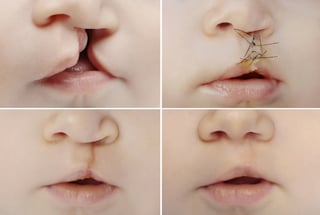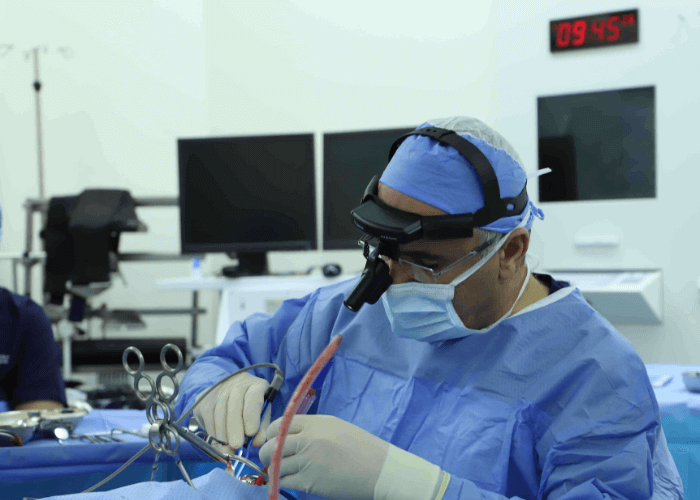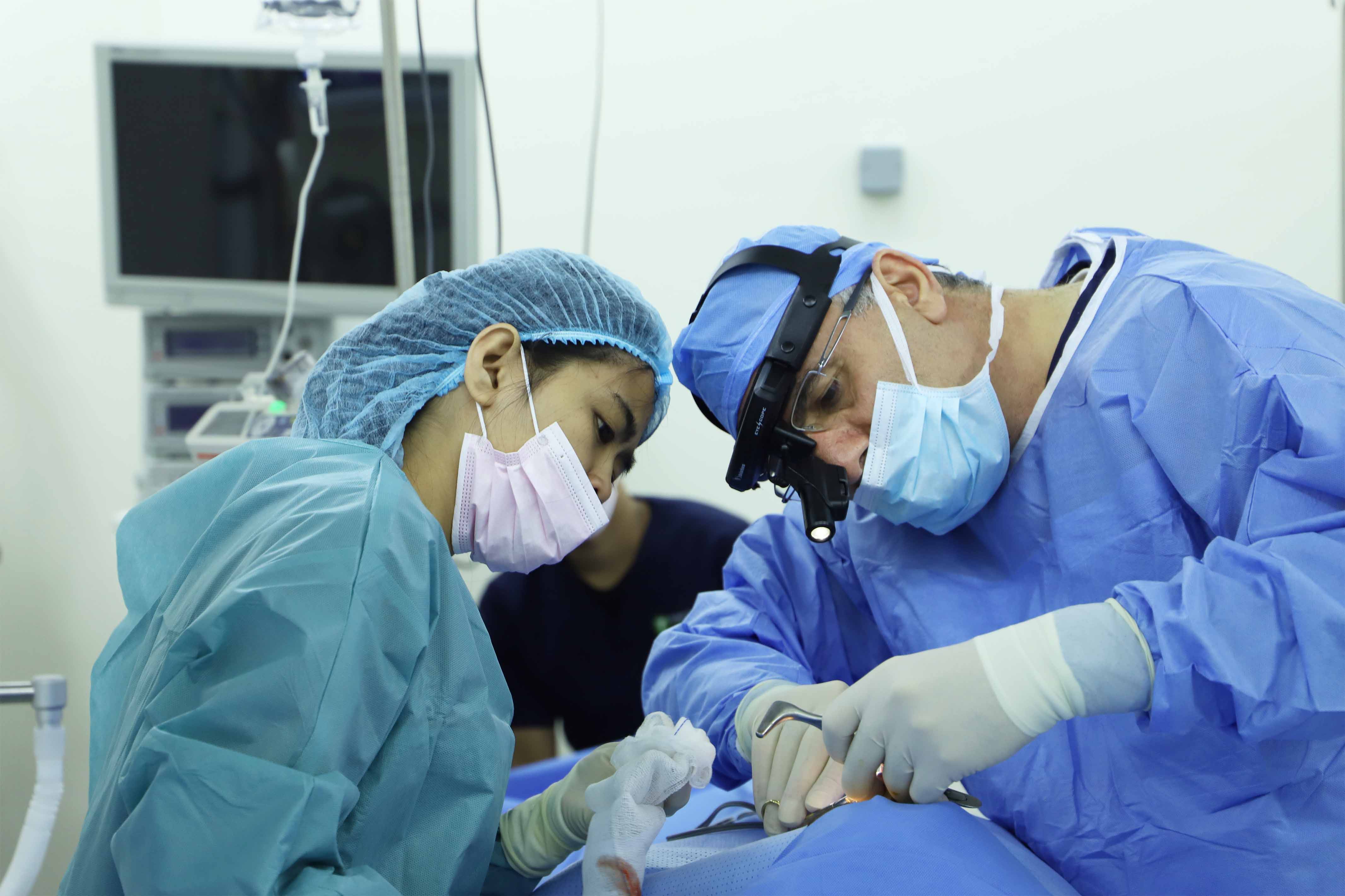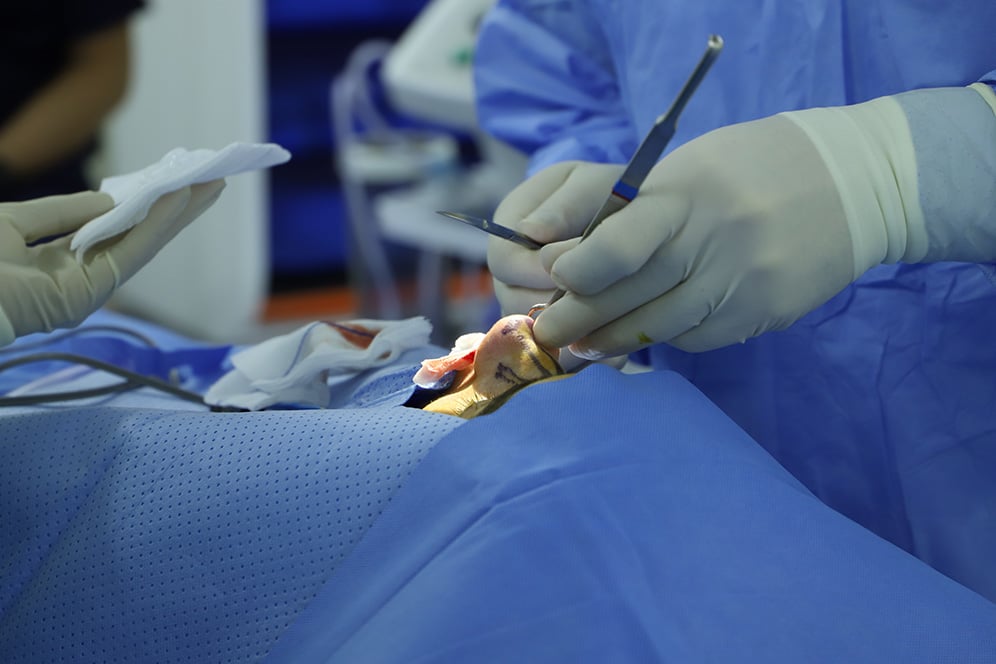Cleft Lip and Palate - Dubai ENT Clinic
A cleft means a split or separation; A cleft palate or lip mean a split in the oral (mouth) structure. A child can be born with both a cleft lip and cleft palate or a cleft in just one area. Oral clefts are one of the most common birth defects.
Clefts in the lip can range from a tiny notch in the upper lip to a split that extends into the nose. A cleft palate can range from a small malformation that results in minimal problems (notch–sub mucosal) to a large separation of the palate that interferes with eating, speaking, and even breathing. Clefts may be unilateral, or bilateral.
There are three primary types of clefts:
- Cleft lip and palate:
- About 50 percent of all clefts, one/1000
- Up to 13 percent of cases present with other birth defects
- Occurs more often in male children
- Isolated cleft palate:
- About one in 2,000 babies are born with this type of cleft (the incidence of submucous cleft palate, a type of isolated cleft palate, is one in 1,200)
- About 30 percent of all clefts
- Occurs more often in female children
- Isolated cleft lip:
- Refers to a cleft in the lip only accounting for 20 percent of all clefts
What causes Clefts?
There are three main factors:
- Inherited
- Environment (poor early pregnancy health or exposure to toxins such as alcohol or cocaine)
- Genetic syndromes: A syndrome is an abnormality in genes on chromosomes that result in malformations or deformities that form a recognizable pattern. Cleft lip/palate is a part of more than 400 syndromes including Waardenburg, Pierre Robin, and Down syndromes. Approximately 30 percent of cleft deformities are associated with a syndrome.
How are Clefts treated?
- This need team work, may include: an Otolaryngologist (ear, nose, and throat specialist), plastic surgeon, oral surgeon, speech pathologist, pediatric dentist, orthodontist, audiologist, geneticist, pediatrician, nutritionist, and psychologist/social worker.
- Treatment of clefts is highly individual, depending on the overall health of the child and the severity and location of the cleft(s). Multiple surgeries and long-term follow-up are often necessary. Because clefts can interfere with physical, language and psychological development, treatment is recommended as early as possible. Surgery to repair a cleft lip is usually done between 10 and 12 weeks of age. A cleft palate is repaired through a procedure called palatoplasy, which is done between nine and 18 months. Additional surgeries are often needed to achieve the best results.
What are the complications of Clefts?
The complications of cleft lip and cleft palate can vary greatly depending on the degree and location of the cleft:
- Breathing: Treatments include surgery and oral appliances
- Feeding: A nutritionist and speech therapist that specializes in swallowing may be helpful. Special feeding devices are also available.
- Ear infections and hearing loss: Any malformation of the upper airway can affect the function of the Eustachian tube middle ear fluid. Tubes can be inserted in the ear by an otolaryngologist to alleviate fluid build-up and restore hearing.
- Speech and language delays: Normal development of the lips and palate are essential for a child to properly form sounds and speak clearly. Cleft surgery repairs these structures; speech therapy helps with language development.
- Dental problems: Sometimes a cleft involves the gums and jaw, affecting the proper growth of teeth and alignment of the jaw. A pediatric dentist or orthodontist can assist with this problem.
Click here for ENT surgical packages
Dubai ENT clinic - If you are in search of ENT specialist in dubai, then we can provide experienced and the leading ENT doctor in dubai for the healthy treatment.




.jpg?width=1080&height=1080&name=DR%20HATEM%20(1).jpg)



